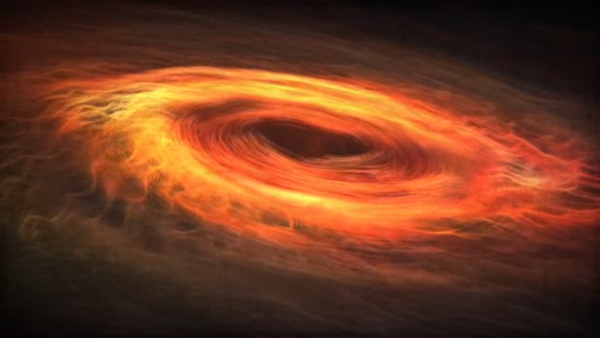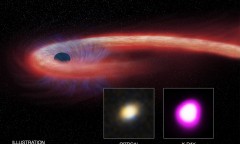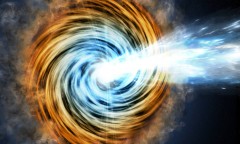By KM Diaz, | February 28, 2017

A black hole has a very strong gravitational force that even electronic radiation, light, and the smallest particles cannot escape from it. (YouTube)
Astronomers previously thought that Tidal Disruption Event occurs every 10,000 to 100,000 per galaxy. A recent study has found that stars may be ripped off by supermassive black holes 100 times more frequently than previously assumed.
A black hole has a very strong gravitational force that even electronic radiation, light, and the smallest particles cannot escape from it. Due to this strong gravitational force, black holes cannot be seen, and the boundary of the region which nothing can escape is called event horizon. When a star gets very close to the event horizon, it will be pulled and ripped off by the tidal force; this astronomical event is called Tidal Disruption Event (TDE) or stellar cannibalism.
Like Us on Facebook
Astronomers usually surveyed the occurrence of TDEs in the sky that passes a thousand galaxies and believed that this is a rare event with an estimated one TDE every 10,000 to 100,000 year per galaxy. However, researchers from the University of Sheffield in the UK say that stars may be ripped off by black holes 100 times more frequently than it was previously assumed after they observed TDE in a survey of 15 galaxies. Astronomers from Universities of Durham and Southampton also confirmed that there is a hidden black hole near the Milky Way.
The lecturer and co-author of the study, Dr. James Mullaney says that the fifteen galaxies have undergone the so-called "cosmic collision" with its neighboring galaxy. It their findings, the amount of TDEs surprisingly increase, this is because of the collision of two galaxies forming stars near the supermassive black holes.
The lead author of the study and Professor of Astrophysics, Clive Tadhunter, expects that the TDE will be common in the Milky Ways and will eventually merge with its Andromeda galaxy within 5 billion years. However, he added that this remains to be a study that needed further investigation.
-
Use of Coronavirus Pandemic Drones Raises Privacy Concerns: Drones Spread Fear, Local Officials Say

-
Coronavirus Hampers The Delivery Of Lockheed Martin F-35 Stealth Fighters For 2020

-
Instagram Speeds Up Plans to Add Account Memorialization Feature Due to COVID-19 Deaths

-
NASA: Perseverance Plans to Bring 'Mars Rock' to Earth in 2031

-
600 Dead And 3,000 In The Hospital as Iranians Believed Drinking High-Concentrations of Alcohol Can Cure The Coronavirus

-
600 Dead And 3,000 In The Hospital as Iranians Believed Drinking High-Concentrations of Alcohol Can Cure The Coronavirus

-
COVID-19: Doctors, Nurses Use Virtual Reality to Learn New Skills in Treating Coronavirus Patients










